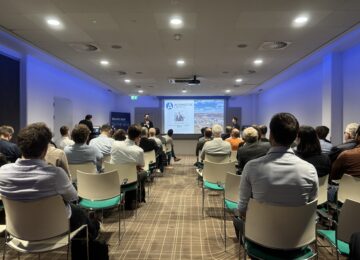ACM authorizes Cable Pooling with storage
The Authority Consumer & Market (ACM) has granted permission for producers of power, battery systems, electrolyzers and companies to jointly use one connection to the electricity grid. This so-called cable pooling ensures more efficient use of both the connection and the power grid. Energy Storage NL has previously teamed up with Invest NL and Ventolines to develop a model agreement written for developers who want to work with Cable Pooling and storage.
Cable pooling can play an important role in accelerating energy transition and reducing grid congestion. For example, by combining a solar farm, wind farm and battery behind one connection, peak loads can be avoided and more sustainably generated energy can reach the grid. An example of this is Stedin's shared connection in Kroegorspolder, where renewable generation is coupled with a farm. This ensures that the generated energy is used directly, making the business more sustainable and reducing the load on the grid.
Currently, it is already possible to share a connection between solar farms and wind farms. With the new Energy Act, the cable pooling accessible to all types of users. However, certain rules apply here: the shared connection must be at least two megavolt amps and may be used by a maximum of four parties (WOZ objects). These rules are laid down in the Energy Decree. Although the Energy Act and the Energy Decree have yet to enter into force, the ACM is already anticipating this by expanding this cable pooling now possible, provided the parties involved meet the conditions set forth.
According to the Energy Act, parties sharing a connection must behave as one joint customer. In practice, this is often regulated through the ACM's MLOEA (Multiple Suppliers On One Connection) scheme. The parties involved agree among themselves on the use of the shared connection and access to the electricity grid. The ACM also provides room for such forms of cooperation.
Parties wishing to use cable pooling are obliged to report this to the ACM. This allows the ACM to continue to monitor usage and developments around shared connections. A special form is available for these reports that has been prepared by the ACM.





